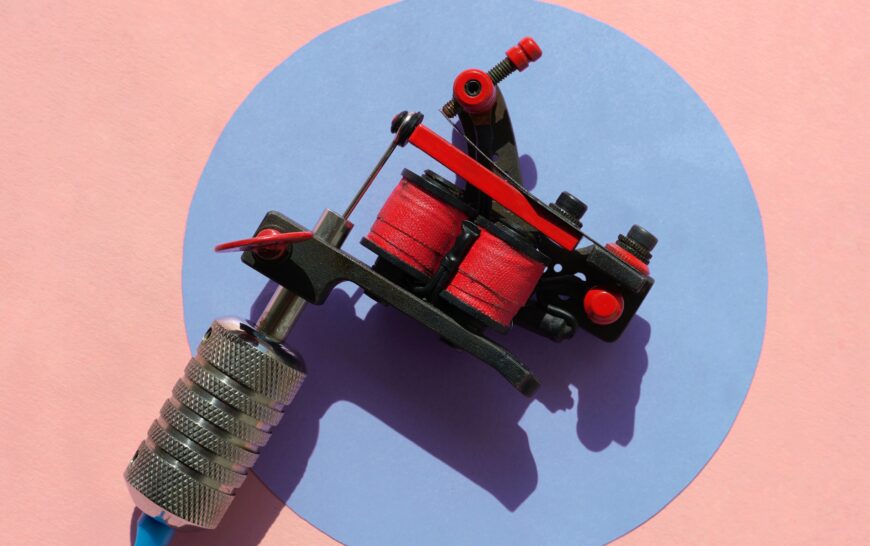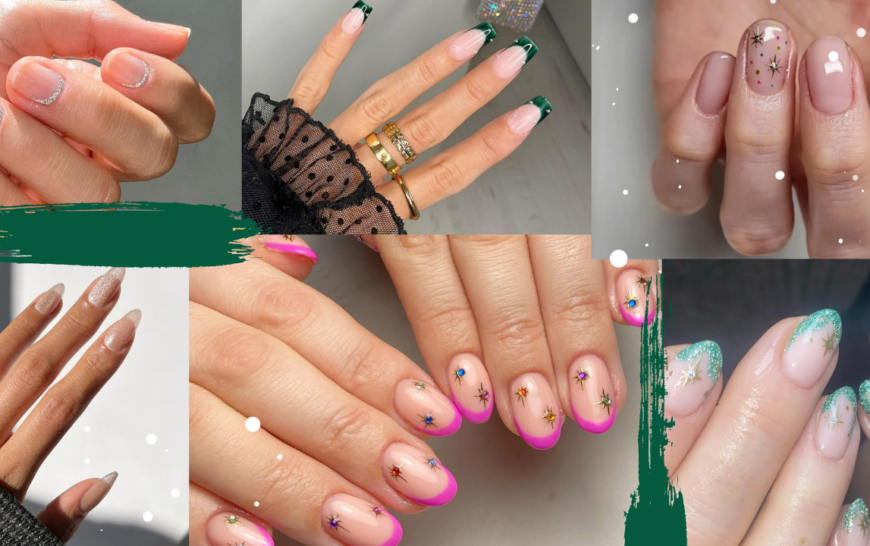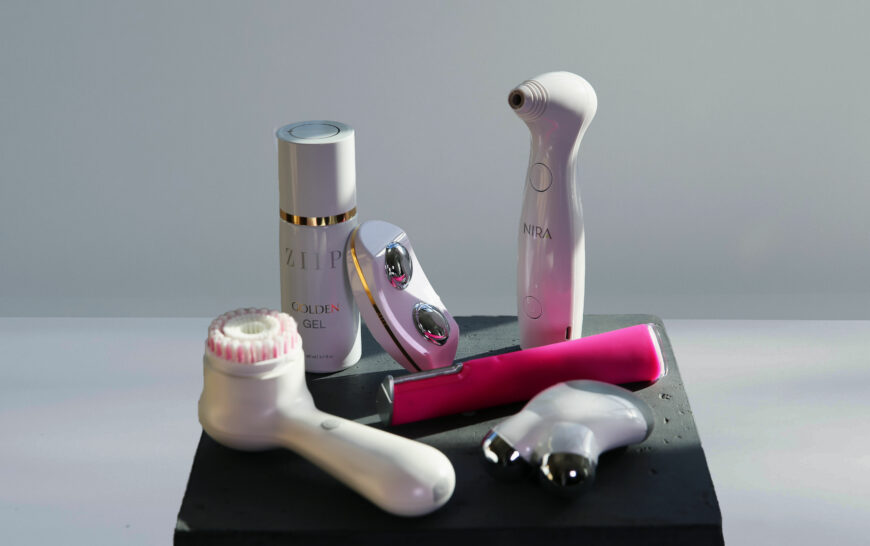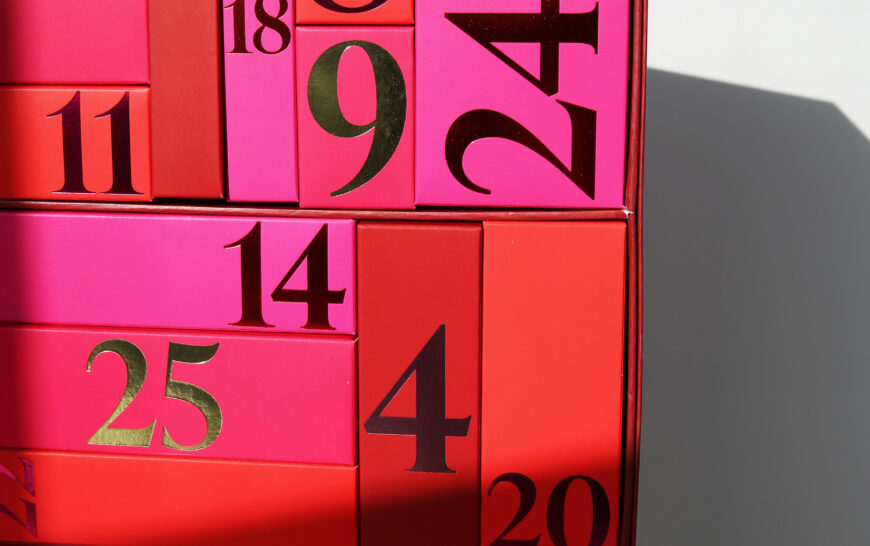
Tattoo 101: Everything You Need to Know Before Getting Your First Tattoo
Getting your first tattoo can feel like a leap into the unknown as a total tattoo newbie, but you wouldn’t be alone if the itch to get inked has heighted since being in lockdown. The desperation to do something new and adventurous and tick that first tat off the bucket list means the books of […]
Getting your first tattoo can feel like a leap into the unknown as a total tattoo newbie, but you wouldn’t be alone if the itch to get inked has heighted since being in lockdown.
The desperation to do something new and adventurous and tick that first tat off the bucket list means the books of sought-after artists are likely to be filled with eager first timers and well-versed tattoo lovers alike, hankering for their fix of fresh ink. So, whether it’s a declaration of love to your favourite band, a tribute to your childhood pet or a fun design you like ‘just because’, here’s everything you need to know before getting your first tattoo.
What To Say When Making An Enquiry
Okay, so you’ve found an artist you love and you’re about to slide into their inbox: what do you say? It’s preferable to be as specific as possible in your initial email as most artists’ inboxes will be full of requests and enquiries and streamlining the process makes it easier for both you and them. Describe your design and attach reference photos if you can, although be aware that most respected artists won’t directly copy an exact design from someone else, so be prepared to adapt and work on a bespoke design specific to you. Be sure to include an estimation of the size you want the design to be (inches are usually the go-to measurement here) and specifics of the placement of the tattoo, too. Include your upcoming availability and you’re good to go.
It’s also important to remember tattoo enquiry etiquette and know that individual artists will have different systems and ways they want to be contacted. Although Instagram is a go-to spot for seeking out artists that work in your style, many don’t book in new clients via Instagram DMs, so it’s always worth checking their bio for the best way to reach to out to them. This might be an online booking form, email or indeed direct message, but do your research and approach them in the best way possible to hopefully ensure a speedy and happy response.
Before Your Appointment
It might be tempting to head to the pub for a G&T to calm your nerves or to pop some Ibuprofen if you’re feeling particularly anxious about the pain, but there are a few hard nos to take into account in the lead up to your appointment. Drinking, even the night before your tattoo appointment is never advised, as alcohol thins the blood and can lead to excess bleeding which could compromise visibility for the artist and therefore impact the quality of the design- not something you want to have to contend with, especially as a first-timer. Aspirin and ibuprofen are also off limits up to 24 hours before your appointment for the same reasons, so if you do end up with a mega migraine the day before, you might just have to push through the pain.
The Aftercare
Once your tattoo is complete it’s time to contend with the next stage of the process: aftercare and healing. A tattoo is essentially a wound, so it needs to be cleaned, looked after and treated as one to ensure it heals properly and to prevent any problems with infection or irritation. Your artist will either use plastic wrap or a clear, medical-grade bandage, like Saniderm or SecondSkin to protect it during healing, and these two options come with different guidance on how quickly you can remove them. Most artists will give you a handy at-home help sheet to take with you detailing all the relevant information for the next couple of weeks, but don’t be afraid to make notes or ask questions if you’re unsure about looking after your tattoo.
Avoid baths and swimming for two weeks following your appointment and wash the tattoo with warm water in the shower only – over washing can cause the skin to dry out and potentially damage the tattoo during this period. Different artists will have different preferences when it comes to moisturisers but keeping the skin hydrated and preventing peeling is the name of the game here. Some industry favourites include Aveeno Daily Moisturising Lotion, Lush’s Dream Cream Body Lotion or Palmer’s Cocoa Butter. Avoid picking, scratching or peeling at the surrounding skin at all costs and stay out of the sun for this initial healing period, too.
Feeling tempted? We spoke to the brilliant Charlotte Mallory of Rose of Mercy – an East London based tattoo studio run by artist and musician Frank Carter – to get the full lowdown on the most frequently asked questions on everything from deciding on tattoo design style, to the cost of getting inked. [The following images are Charlotte Mallory’s work]
Do you have any tips for choosing a tattoo design you won’t regret later down the line?
I think sitting on a few designs for a while is a good idea. Maybe making a mood board of designs you’ve seen and loved. Even drawing a few ideas onto your skin to live with it for a little bit of time. That being said – some of my favourite tattoos I turned up with no idea what I was going to pick. I think choosing the right artist is essential. Pick an artist you know you can collaborate with or who has done something similar to what you’re looking for.
What should you look for when choosing the right artist for you?
Choose an artist who does a similar style and line thickness to the kind of tattoo you’re looking for. A fine line tattoo artist won’t necessarily be great at thick-lined traditional tattoos and vice versa. It’s not always the case but it’s better to pick the artist based upon the work they’re displaying on their Instagram page and then you can be sure they’ll be able to give you the tattoo of your dreams.


What are the main tattoo styles to choose from?
- Fine line tattoos
- Traditional tattoos
- Blackwork tattoos
- Neo-traditional tattoos
- Linework tattoos
- Geometric or ornamental tattoos
- Realistic tattoos
- Black and grey tattoos
- Micro realism
I could go on! There are a fair few more subcategories but I think those are the main ones!
There are also differences in the way a tattoo is made. For instance, machine tattoos (most people outside of the industry know these tattoos as ‘tattoo gun tattoos’, but within the industry, the ‘tattoo gun’ is known as a ‘tattoo machine’
And then there are hand poke tattoos – this is hand poked into the skin using the same needles that are used in tattoo machines, but they are made by hand and without the machine. This is a more homemade looking approach which some people prefer.
Do colour tattoos wear differently to black tattoos?
Yes, sometimes pale or light colours can fade out more quickly than black tattoos. However your tattoos can always be refreshed further down the line (in say, 10 or 20 years), and touch-ups are usually free up to a year after you’ve had the tattoo. (This isn’t always the case so check with your tattoo provider).
What’s the difference between machine tattoos versus hand poked and how do you know which is right for you?
Tattoo machines can provide a cleaner look than the more homemade made hand-poked approach. However, I have seen some hand-poked tattoos look almost as clean as a machine tattoo. Hand poked tattoos are placed into the skin one poke at a time with a needle (creating a single dot each poke), where a tattoo machine is making the needle move up and down extremely fast creating a line effect. Hand poked tattoos take longer and require less concentration from the tattoo artist so it can be a more relaxed approach during the session and you can have a longer chat with your tattoo artist. In terms of pain, I don’t find hand-poked too painful but some find it more painful than machine tattoos. It also depends on your artist and where you’re getting tattooed.
Will I need to get a tattoo touched up over time/how can I make sure it stays looking 10/10 for as long as possible?
The most important thing for your tattoos is SPF! Honestly, I never sunbathe because I love my tattoos! If you do like sunbathing, cover your tattoos up or put on a high SPF. Something to be aware of is that tattoo ink can minimally expand in the skin over the course of your life. Tattoos also look as young as your skin looks young. It sounds funny to say, but I’ve tattooed much older people up into their 70’s and the tattoo will look older even freshly done just based on the fact that the skin is already old.
Finger tattoos are very popular but they always seem a bit blurry, does the ink bleed in certain places on your body more than others?
The tattoo probably looks blurry because it has either ‘blown out’ where the tattoo artist has been heavy-handed to make sure the ink stays (because fingers are prone to ink drop out due to all the movement in the fingers and tendons and things like that). Or maybe it looks blurry because the ink has dropped out during the heal. Personally, I like to go with a happy medium and not go too heavy-handed or go too light. However, I would rather go too light if I had to pick between either as the fingers can always be touched up.
What’s the process like from start to finish? Does the artist typically design the piece before you arrive or should you expect the final design to be done on the day when you arrive?
Most artists prefer to have something ready for the client to look at on the day (just because there is a lot of back and forth if there are alterations and the alterations can be made a lot faster on the day with the client there). Make sure you’re happy with the design on the day, it’s your body and a good tattoo artist shouldn’t mind about any alterations you have and will want to work with you to give you a great tattoo and create the tattoo you have in mind.
What are the biggest misconceptions about getting a tattoo?
I think a lot of people think it will hurt a lot more than it does! It’s good to pick a place that hurts less or medium for your first tattoo. In my opinion, fine line or single needle small tattoos hurt less so maybe something like that is a good first tattoo idea.
Another misconception is that it is the tattoo artist pressing their opinion too much on you or being overbearing – a good tattoo artist will give you the space to express yourself and collaborate with you. You should always feel safe and happy when getting a tattoo. Perhaps go to a tattoo artist based upon recommendation, or go to a tattoo shop with great reviews. Do your homework, check out the tattoo artist’s Instagram page, the shop they work at and the reviews that the shop has.
Is getting a tattoo a bad idea for someone with a low pain threshold? What can someone do to help make the process easier?
There are numbing creams that you can use (not all tattoo artists provide this so it’s a good idea to provide your own or liaise with the tattoo artist or studio). Single needle tattoos are not particularly painful in my opinion so that is a good option. The least painful location for a tattoo is the forearm. A lot of pain can be the mindset you are in. Go fully prepared to the tattoo shop having eaten, and have a little chat with the tattoo artist before the tattoo begins to express your concerns and they should take that on board and perhaps do a little ‘dot’ with the tattoo machine on your skin where the tattoo is to start with so that you know how the rest of the tattoo will feel. Never be afraid to let the tattoo artist know that you’d like a break for a moment. The best tattoo shops are safe spaces and designed to put you at ease. Rose of Mercy (where I work at) was designed specifically with this in mind and to give the customer the safest and most relaxing experience.


Which part of the body is typically seen as the most painful to be inked?
I had a really detailed tattoo made on my knee cap with a coil machine. (This is a tattoo machine which hits a little harder than a rotary tattoo machine. They’re often used for creating traditional tattoos) – so that hurts a lot! That took three hours! Ribs can hurt if you are getting thick lines there. Feet can hurt also. Honestly a lot of pain can depend on the artist, their technique, the location, the style of tattoo you’re getting. There are many factors involved! I would say legs or arms is a good first tattoo location. I also do a lot of side boob/rib tattoos as first tattoos and the pain honestly isn’t too bad if you’re going for fine lines and something less detailed.
What happens if a tattoo artist makes a mistake?
Hmm… mistakes can happen if there is a misspelling. Especially so if the word isn’t in the language either the client or the tattoo artist speaks. Really double check spelling, grammar and translation is correct, and then triple check!
How are tattoos priced? Is it by design/size/expertise of the artist?
Yes, all of these things are taken into account. The tattoo artist may have special expertise in a specific style which may account for their pricing. Design, detail and size are also taken into account. Tattoo artists will charge either by piece or by the hour.
More detailed pieces like realism or micro realism may be charged by the hour instead of by piece. Tattoo artists often have a minimum spend per tattoo as well. This is because of the cost of their whole set-up, needles, and also the cut they are giving to the shop they work at.
Tattoo shops can take anywhere between 20-50% of each tattoo you do (depending upon the cut you have worked out with them) so it’s important to take this into consideration when a tattoo artist is giving you their pricing before the tattoo! The tattoo artist isn’t taking all of the money! Also needles, tattoo machine and other tattoo equipment the artist provide themselves. The shop will provide everyday things like razors, Vaseline, cling film, gloves and paper towels.
You can find Charlotte at Rose of Mercy, London, or book in with any of her other talented colleagues via their website: www.roseofmercy.com.









